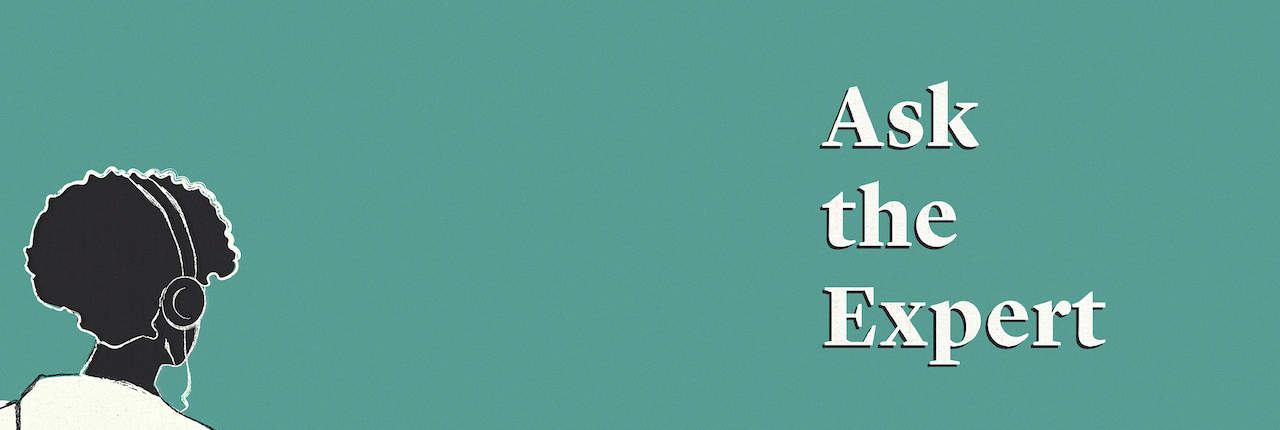COVID-19 and the Risk of CNS Demyelinating Diseases
February 20, 2023
For this episode of “Ask the Expert: Research Edition,” Rebecca Whitney of SRNA was joined by Dr. Michael Levy. Dr. Levy gave a brief overview of one of his recent papers with colleagues that was featured in Frontiers in Neurology, “COVID-19 and the risk of CNS demyelinating diseases: A systematic review.” For this paper, the authors reviewed literature published in English on different platforms around the world where the diagnosis was confirmed usually with aquaporin-4 or MOG antibody testing, including children and adults. They examined whether Covid infections cause inflammatory central nervous system (CNS) demyelinating diseases, including multiple sclerosis, NMOSD, MOG antibody disease, or relapses, and at what rate. You can view the paper here.
Transcript
[00:00:00] Rebecca Whitney: Hello and welcome to the “Ask the Expert” podcast series, “Research Edition.” My name is Rebecca Whitney with the Siegel Rare Neuroimmune Association. I was joined for this podcast by Dr. Michael Levy for a brief overview of a recent publication in Frontiers in Neurology titled, “COVID-19 and the risk of CNS demyelinating diseases, a systematic review.” Dr. Levy specializes in taking care of patients with neuroimmunologic diseases including multiple sclerosis, transverse myelitis, optic myelitis, and neuromyelitis optica. In 2009, Dr. Levy was appointed to the faculty as Assistant Professor at Johns Hopkins, where he started the Neuromyelitis Optica Clinic and Research Laboratory. And in 2019, he moved to the Massachusetts General Hospital in Harvard Medical School, where he is an Associate Professor and Research Director in the Division of Neuroimmunology and Neuroinfectious Disease.
[00:00:56] Thank you very much, Dr. Levy, for joining me today to discuss one of your recent papers with colleagues that was featured in Frontiers in Neurology, it’s “COVID-19 and the risk of CNS demyelinating diseases, a systematic review.” And I was just hoping to go over and summarize what this paper is about. And so, if you can start off by telling me what type of research or paper this is and why is it one that would be done?
[00:01:28] Dr. Michael Levy: NMO and MOG are both very rare disorders. It’s hard for one clinic to amass enough evidence to make a conclusion about something that happens in rare diseases, especially if you’re looking for a rare cause or rare trigger like COVID-19. So, what we did instead was we scoured the literature, everything including publications and posters, and other reports published in different platforms all around the world, in English that we could understand, where we confirmed the diagnosis, usually with aquaporin‐4 or MOG antibody testing. And then we looked for cases that were triggered after a COVID infection.
[00:02:09] And the question that we had at the time was, do COVID infections trigger relapses? Do they trigger – do they cause disease? And at what rate, how often does this happen? Is this really a potent trigger or just one of many? Of course, there’s a major limitation to this project because it’s not like we were surveying the whole world. We don’t know what happens in cases that are not published. We only have access to cases that are published. So, there’s certainly a bias there and the bias is toward new cases because they are probably a bunch of NMO and MOG patients who got COVID and then within the month may have had a relapse. Sometimes they don’t even know they had COVID and that wouldn’t be very exciting and so they probably wouldn’t publish it.
[00:02:54] But a new case of this antibody-positive patient was totally normal before COVID and then had COVID and now has a new case of MOG or NMO, and wondering if there’s a link there; those were disproportionately published compared to relapses. But all in all, the number of cases did not seem to be unusual for the number of COVID cases. If you think about how many people in the world were infected and then how many people got NMO and MOG as a result, the likelihood that there’s something specific about COVID that triggers NMO and MOG we concluded was very low because otherwise, the numbers of cases after infection would be higher.
[00:03:39] More likely, just like with flu and vaccines, and basically anything that activates the immune system, COVID probably triggered this disease in someone who was already preparing to present and then this was the final straw. Or another way to think about it is like pouring gas on a fire. There may have been something brewing and then this COVID infection really made the presentation much more obvious and the patients finally came to attention. So, that was our conclusion is that there probably was some immunological trigger, but not very potent, and not specific to something about the COVID virus in particular.
[00:04:22] Rebecca Whitney: OK and was it inclusive of adults and children in your case reports that you reviewed?
[00:04:29] Dr. Michael Levy: We included patients of any age. Of course, a lot of kids who get COVID-19 never even know they did. So, I think there’s a bias there too. There are a lot of biases to this type of study. But yes, we did include everybody including kids who may have had NMO and COVID together, or MS and COVID, or MOG and COVID.
[00:04:51] Rebecca Whitney: And so, I noticed it was not inclusive of those that might have had acute transverse myelitis or idiopathic transverse myelitis in the setting of COVID. Is there a particular reason as to why? Was it just because it was focused on those three identifiable disorders and not inclusive of those that may have had TM after COVID?
[00:05:19] Dr. Michael Levy: No, there is already a good study out there on the risk of COVID triggering transverse myelitis. There were 50-plus cases and they were nicely characterized in a journal called Multiple Sclerosis and Related Disorders. We didn’t necessarily need to reproduce that. I think that the ease of making the diagnosis with MOG and NMO with an antibody positive and with MS having octagonal bands and an MRI pattern consistent with MS, makes it a little bit easier because with transverse myelitis you’re always wondering is that the first event of NMO or MOG or something else? You really need the benefit of retrospect over two or three years to really confirm the diagnosis of transverse myelitis. And COVID-19, just coming out in 2019, 2020, it’s hard to be sure that these cases are really transverse myelitis, but it is something that maybe can be done in the future as those cases are confirmed over time.
[00:06:21] Rebecca Whitney: Thank you. And with this type of literature review, this type of research, how do we move forward with that in the scientific medical community as well as in the community of individuals who have been diagnosed or may have a suspected diagnosis of one of these disorders?
[00:06:41] Dr. Michael Levy: I think this study adds to the understanding that any disease or any immunological trigger, infection, vaccine, or anything else that activates the immune system can also trigger MOG and NMO. I think what it suggests is that there’s nothing really specific about it. So, if our patients do get sick, it’s just like any other illness in terms of the risk of relapse, and we can counsel them and say, “Well, just like the flu or anything else, this might trigger a relapse.” We need to be extra vigilant, especially if you’re not on immunotherapy, the risk definitely goes up.
[00:07:17] But we’ve always been looking for a specific trigger for these diseases. For NMO, for example, we’re looking for something that looks like aquaporin‐4 that confuses the immune system which then triggers NMO. And with MOG antibody disease, we’re looking for something that looks like MOG, where the immune system fights it off in the virus and then there’s a confusion with the MOG inside the human body where the immune system says, “That looks just like the MOG in the virus.” So, we’re always looking for the potential triggers, and NMO and MOG in particular provide – since we know exactly what the immune system is targeting, they provide the most potential for finding those mimicking triggers.
[00:07:58] Rebecca Whitney: Excellent. Well, thank you so much for taking the time to give us a summary on this paper. We really appreciate it. And I’ll also include a link to the paper for anyone who wants to review it. It is open access so we’ll include that in the description for the podcast. Thank you, again.
[00:08:17] Dr. Michael Levy: Terrific. Thanks.
LISTEN & SUBSCRIBE
TO PODCAST
DOWNLOAD MP3
DOWNLOAD TRANSCRIPT











